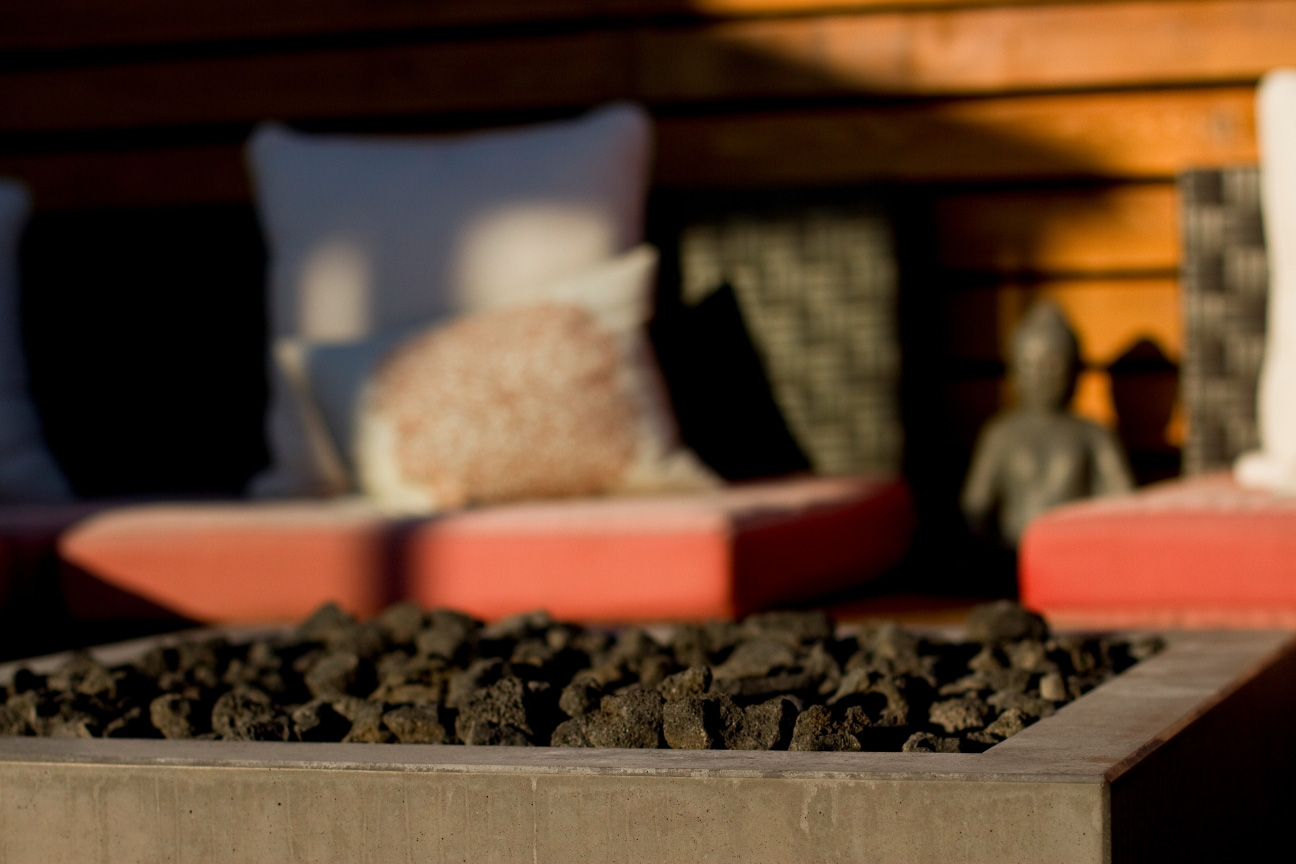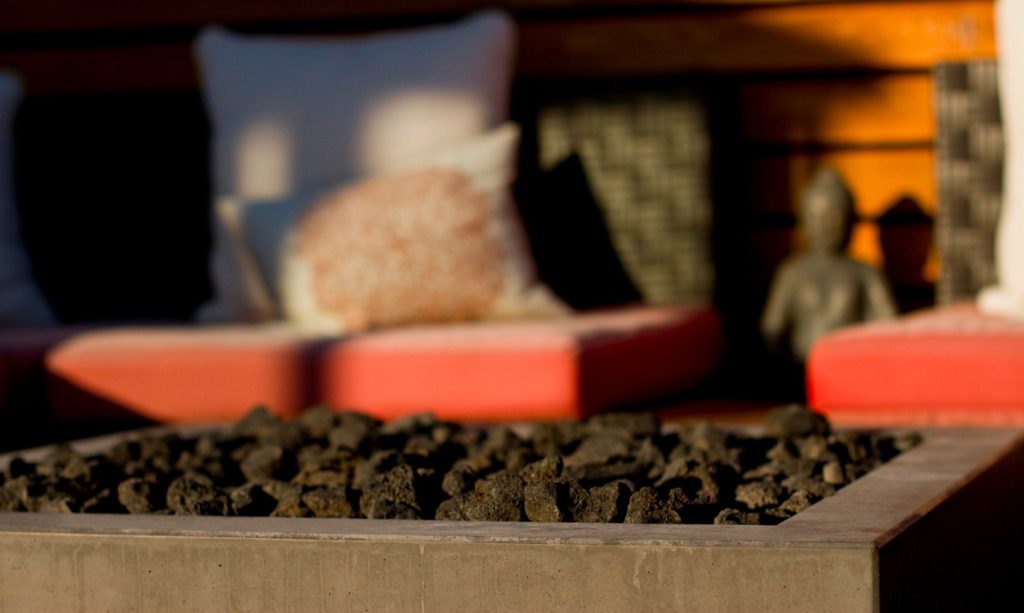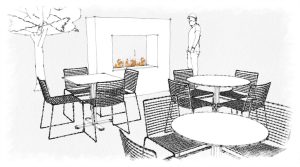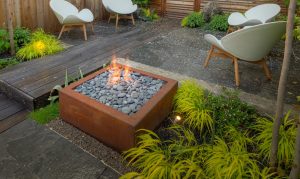On this rainy, rainy, rainy day in September, I am reminded that here in Toronto, fire pit season will soon be drawing to a close. But as mother nature has her way with the leaves on the trees and the umbrellas of passers-by, I think: what better conditions to talk about the effects of the weather and time on our modern outdoor fire pits? Specifically, our hand-cast concrete fire pits.
Concrete, though manufactured, is derived largely from naturally occurring materials. This is the main reason that it has an ‘organic’ look and feel and why, when used outdoors, and exposed to the elements, it reacts much like other natural substances. The best word to describe age on concrete is patina.
The Merriam-Webster Dictionary defines patina this way:
a: a usually green film formed naturally on copper and bronze by long exposure or artificially (as by acids) and often valued aesthetically for its color
b: a surface appearance of something grown beautiful, especially with age or use
In other posts, I have referred to the process of making concrete objects as a kind of fossilization or capturing of a moment in time. The solidification of concrete ‘freezes’ a snapshot of the chaos of the mixing and chemical reaction that takes place. The aging of concrete in its environment continues this process. Like the silvering of cedar as it is exposed to sun and rain, the eroding of stone under weather and traffic, or the appearance of creases and scars on human flesh, worn by experience, patina on concrete is a record of time and occurrences.

Our concrete fire pits are cast solid and left raw with no coatings or surface treatments. This ensures that they will age gracefully and honestly, gradually exposing more of the material’s character. Not unlike the copper in the definition above, concrete’s patina arises partly from a chemical reaction. Concrete is born from a reaction with water, and this continues to happen to a small degree even after it is fully cured. Where copper oxidizes, concrete hydrates. As concrete is porous, moisture can penetrate slightly into the surface causing tiny chemical changes and crystallizations, creating evidence of age and weathering, and further hardening its surface.
Unlike metals, though, concrete has secrets that lie below its surface. Over much longer times, small bits of sand and aggregate begin to show themselves – again subtly transforming a piece’s aesthetic.
Overall, there is a reason that a ‘patina’ has come to be almost universally appreciated: it signifies time and the ability of a thing’s ability to stand its tests. Though we live in a world filled with artificial and applied patinas, there is no substitute for the look and feel of something that truly wears history. Concrete has proven over centuries, its ability to last – it has not always been appreciated for its looks. But like other natural materials that benefit from the durability, concrete gets character from age and beauty from patina.
















